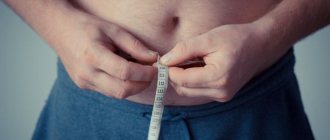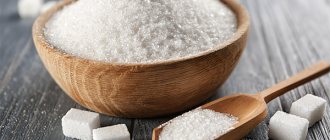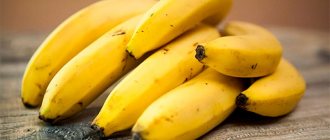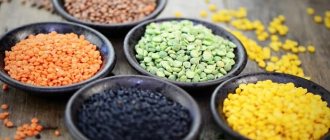Most people want to take care of their body and maintain the desired weight, eat fewer calories, especially women, and they remove cereal from their diet. But all nutritionists agree that porridge is very important for the body. After all, they provide many useful substances, the main one of which is fiber; without it, the body cannot function fully.
The main property of fiber is the removal of unnecessary toxins from the body and the cleansing of blood vessels from cholesterol. And if you completely give up porridge, you may have serious health problems.
Not only do porridges provide fiber, they also provide the body with all kinds of vitamins. For example, B vitamins, they help improve the condition of skin, hair and nails. Also, vitamin E. Helps reduce cholesterol in the body, slows down skin aging and improves memory. Porridges also contain a bunch of essential microelements. But the question remains, which porridge has less calories?
How to count calories and lose weight?
Briefly about calories and calorie content
A calorie is a unit of energy. Historically, scientists have defined a "calorie" as a unit of energy or heat that can come from a variety of sources such as coal or gas. In a nutritional sense, all types of food—whether fats, proteins, carbohydrates, or sugars—are important sources of calories that help people live and function properly.
Additional Information! Calories were defined by the French physicist and chemist Nicolas Clement in the early nineteenth century. Let's explain basically the definition itself: Physics uses units, one calorie is the amount of energy required to raise the temperature of 1 g of water by 1 C. Physics is the study of inert systems, as in non-living systems, so you may ask yourself: How is it related to a person? The use of calories in nutrition was an attempt to measure the amount of energy a given food provides and how much we need to eat daily to live.
By digesting food, the body metabolizes it into, among other things, vital energy. It is this energy that allows the body to breathe, the heart to beat, the brain to work, and provides energy for many other activities of the body. Food is a source of energy, fuel for the body!
Porridge for dinner when losing weight. The right dinner, or what to eat in the evening to lose weight?
No meal is surrounded by as many myths and stereotypes as dinner. The principles of healthy eating refute them. There is no need to suffer from hunger, prohibiting yourself from eating after 18-00, giving nutritious and tasty dishes to the enemy, or limiting yourself to a glass of “zero” fat kefir. Dinner can and should help with weight loss - it’s just a matter of proper organization.
Skipping meals for a long time (from afternoon snack to morning) disrupts metabolism, harms the gastric mucosa, interferes with the building of muscle tissue and metabolic processes that the body “starts” at night. Without eating dinner, a person has difficulty falling asleep in the evening, and healthy, full sleep is the key to effective weight loss. In the morning you feel a loss of strength, it’s hard to wake up and get up. This does not give carte blanche to overeating in the evening and exceeding the daily calorie intake. Dinner for weight loss - meals eaten on time, rich in nutrients, which will not cause heaviness and will not interfere with weight loss.
Rules for evening meals for weight loss:
- have dinner three hours before bedtime (plus or minus 15 minutes) so that food is absorbed and you don’t feel hungry before bed. Therefore, the “before six” rule will only work if you go to bed at 21-00;
- dinner accounts for 20-25% of the daily calorie intake - if you lose weight with a diet of 1200-1600 kcal, it will be up to 400 kcal;
- if the daily calorie intake has been met during the day, it is allowed to supplement a light dinner with kefir with herbs or bran, natural yogurt half an hour to an hour before bedtime;
- you should not skip an evening meal - irregular dinners are fraught with gastrointestinal diseases, a “plateau” when losing weight, a person will become irritable and nervous;
- dinner must include foods rich in protein and fiber (about 100 g and 150 g, respectively), with a minimum of carbohydrates and foods with a high glycemic index;
- you need to concentrate on food, chewing food thoroughly and putting away gadgets to avoid the risk of uncontrolled overeating;
- dinner should be accompanied by a sufficient amount of liquid - water, pure or with lemon, green or herbal tea (many doctors do not recommend freshly squeezed juices; it is better to eat a whole fruit or vegetable);
- If you overeat (an evening trip to a cafe, a hard day at work), you should not skip breakfast the next day - additional training or jogging will help get rid of the calories received.
Why do diets recommend reducing the number of calories you consume?
It is interesting to know what calories are: a unit of energy needed for the functioning of our body. Each of us has a daily calorie quota that varies depending on several factors. How much energy does the body need per day? For an athlete, or a mother of 3 children, or a manager, the calorie intake is different in each case.
Which flour is the lowest in calories and healthiest?
Normal sleep already wastes energy (the body “burns calories”), just like walking and running. But it also depends on many other factors: genetics, age, stress level, climate, etc.
Note! The idea of cutting calories comes from the first law of thermodynamics, which states that all energy is conserved. According to this law, weight will be the direct result of what a person eats, minus what the body burns. In other words, everything a person eats that they don't burn is stored (turned into fat), and anything they burn beyond what they eat goes out of their reserves (you "burn fat"). This is why diets recommend reducing the number of calories you consume. This is a very simplified theory.
Calorie content
Calorie content of wheat porridge per 100 grams of dry product
Eating wheat porridge is very profitable, it is inexpensive, but it is filling, and the benefits will be obvious. If you cook it for breakfast with milk, sugar and butter, you will definitely have enough energy until lunch and still have some left over. Cereals are divided into two types:
- “Artek” finely crushed polished grain;
- “Poltavskaya” is uncrushed and coarsely crushed polished grain.
In addition, instant cereals and semolina are produced from wheat. Wheat comes in hard or soft varieties, so soft semolina is not suitable for dietary nutrition, but the benefits of porridge for those losing weight are very noticeable.
Wheat porridge has a delicate consistency and pleasant taste. Its peculiarity is that the taste changes depending on the cooking method.
You can prepare any dish based on it: porridge with milk, dietary porridge with water, salty or sweet, with spices, it can contain all kinds of additives, fruits, nuts, dried fruits, meat, canned food.
With milk
If you like a more viscous porridge, then try cooking from the Artek brand, it boils quickly and well, it only takes 15 minutes. Calorie content is only 100 kcal/100 g.
Calories in milk
| Name | Quantity | fats | carbohydrates | squirrels | Total kcal |
| Wheat porridge | 60 gr | 1 g | 37 g | 7 g | 185 |
| Milk | 125 ml | 5.4 g | 0 | 4 g | 64.7 |
| Water | 100 ml | 0 | 0 | 0 | 0 |
| Total calories per 1 serving/250 g | 57.6 kcal | 148 kcal | 44 kcal | 250 |
On the water
Sticky porridge is beneficial for ulcers and gastritis; it is often used in therapeutic diets because it has a good effect on the intestines.
If you cook porridge in water, you will get a delicious side dish or a dish on its own. Calorie content is only 115 kcal/100 g. Before cooking, the cereal can be rinsed to drain off excess flour, but if you like a sticky consistency, do not rinse. Porridge with butter and sugar will be tastier, but the calorie content will increase by about 50 kcal/100 g.
THESE ARTICLES WILL HELP YOU LOSE WEIGHT
Your feedback on the article:
( 823 ratings, average: 4.50 out of 5)
Lowest calorie cereal
Barley for weight loss
Which porridge has the least calories? The answer is pearl barley porridge, the lowest calorie porridge, it is whole, peeled and polished barley grains. Even in ancient Rome, pearl barley porridge was fed to gladiators, because even then they knew about its usefulness.
Note! If you add pearl barley porridge to your diet, it can help achieve the desired result, as it is the lowest-calorie porridge. Since it can become one of the main components of a healthy diet as a dietary product. It perfectly removes toxic substances from the body. Also containing a large number of vitamins of different groups, folic acid, strengthens the immune system, helps preserve vision, and also improves the condition of the nervous system.
Pearl barley contains sixteen minerals, one of which is phosphorus; it normalizes the functioning of the endocrine system.
Also, by consuming it, you can replenish the body with calcium, magnesium, potassium, iron, zinc, and even iodine.
Barley porridge
Barley porridge contains hordecin, which helps in the treatment of fungal diseases and bacteria.
Why do people lose weight on porridge?
It's a matter of product composition. Most cereals contain fiber. These are valuable natural fibers that do not dissolve in our body. Unlike other substances that are absorbed through the intestinal walls, fiber remains unchanged. Leaving the intestines, it takes with it a lot of unnecessary things. For example, low-calorie porridges, oatmeal ideally remove fats, barley removes toxins and antibiotic breakdown products. Rice porridge has a powerful sorbent effect, absorbing aggressive allergens. Best suited for use in the morning.
The more fiber, the greater the “cleaning” effect of cereal in the intestines. The coarsest fibers work on the principle of a toothbrush: they simply clean the toxins that have settled on them from the mucous membranes. Only coarsely ground cereals with preserved fruit shells are capable of such “general cleaning”. These include Hercules oatmeal, barley groats (crushed and unrefined barley grains), brown and unpolished rice.
But even if the cereal is cleaned and polished, it still promotes weight loss. And again it’s a matter of its composition. Which porridge is most suitable for PP for breakfast and dinner?
- Slow carbohydrates. All cereals contain them. What distinguishes them from fast carbohydrates, which are abundant in baked goods, confectionery, and sweet drinks, is the speed at which they are absorbed by the body. If fast ones are absorbed in minutes, causing an instant surge in blood glucose levels, which, without having time to be wasted as energy, is transformed into fat, then long-lasting carbohydrates are broken down within several hours. They are absorbed gradually, providing a long-lasting feeling of fullness. And if you don’t feel like eating, then the chances of losing weight are much greater than on a starvation diet.
- Beta glucans. These substances in most cereals work in the same way as fiber. Only they act not in the intestines, but in the blood vessels. There they dissolve cholesterol plaques, providing high-quality cleansing of the circulatory system.
- Vitamins. Cereals are rich in a whole range of vitamins, but most of all they contain group B substances. They are involved in the formation of the nervous system, tissue regeneration, and hematopoiesis. Because of this, porridge for weight loss can be considered a source of calm, beauty and youth.
- Amino acids. Cereals contain substances the body needs for normal metabolism. And it, in turn, is the basis for a slim body. Amino acids can only be obtained from food. And porridge is the cheapest, most accessible product on the list of their carriers.
But what cereals don’t contain is animal fats. They are the ones that settle in the form of cholesterol plaques on the walls of blood vessels. Products of plant origin only benefit the body if consumed correctly.
Barley porridge for weight loss
If your goal is to lose a couple of kilograms, then this cereal will undoubtedly suit you; there are many fans of the pearl barley porridge diet. Here is one such diet.
Important! You must cook pearl barley porridge only in water, without milk, sugar or flavorings.
Cook according to the recipe given above. Use it 3-4 times a day, in small quantities.
You can also drink kefir, tea and herbal infusions without sugar.
But this diet should be followed for no more than a week.
Typically, with this diet you lose 3-4 kilograms.
Note! If you eat pearl barley porridge too often, you may experience intestinal problems. So it would be better to increase the amount of liquids you drink per day.
Ratings
Based on the table above, it is easy to make ratings of the lowest-calorie cereals and cereals. But remember that they will be conditional. The values are as close as possible to each other and can change places in such a TOP.
For example, according to generally accepted standards, corn grits are higher than semolina (328 kcal versus 333). But it “weighs” 360 kcal, and semolina from Makfa weighs 333 kcal. So watch the packaging you buy.
Rating of water-based porridges by calorie content (hereinafter - from lowest to highest):
- Barley.
- Rice.
- Manna.
- Corn.
- Oatmeal.
- Pea.
- Millet.
- Buckwheat.
- Spelled
- Wheat.
Almost all dishes included in this TOP 10, with the exception of the last position, can rightfully be called low-calorie, since they fit within the framework of less than 100 kcal per 100 g of a ready-made dish.
Rating of cereals with milk by calorie content:
- Rice.
- Manna.
- Oatmeal.
- Barley.
- Corn.
- Millet.
- Spelled
- Wheat.
- Pearl barley.
- Buckwheat.
Here, in terms of low-calorie content, it is already much more difficult than with water options. Only the first 2 fall into the range of less than 100 kcal per 100 g of ready-made food. For the rest, this figure exceeds the established value.
Rating of dry cereals by calorie content:
- Oats (whole grain).
- Dried peas.
- Barley grits.
- Buckwheat is ordinary.
- Pearl barley.
- Corn grits.
- Semolina.
- Millet.
- Spelled
- Rice (brown).
As already mentioned, none of the cereals falls into the low-calorie category from a nutritional point of view. However, this is not so critical, since no one will eat them dry. And after boiling, this figure becomes several times less.
Low-calorie cereals for weight loss
- Pearl barley porridge has the lowest amount of calories of all existing ones, it has only 324 kilocalories per 100 grams of product. It is a good choice for those who want to lose weight.
- Corn porridge already has 325 kilocalories per 100 grams (hereinafter we will count calories per 100 grams of product), it removes fats from the body, preventing them from being deposited in the body. This porridge is also recommended for people who want to lose extra pounds.
- Semolina porridge, next on our list, this porridge is known even to a child, is good for treating gastrointestinal problems and is also suitable for diet. It contains 326 kilocalories.
- Next, buckwheat, a little higher in calories than the first three, 329 kilocalories, but no less healthy. All low-calorie cereals are inferior to it in terms of the amount of nutrients in their composition. It stabilizes blood pressure and inhibits aging, and also strengthens the walls of the body’s cells. Buckwheat is also recommended for people who suffer from heart, liver and stomach diseases.
- Next on the list is rice cereal. There are quite a few more calories than buckwheat, 330 kilocalories, but it is known as one of the best for unloading the body; this product can be found in almost all diets.
- Millet cereal, although it is lower than the other cereals listed above, since it has more calories - 334 kilocalories. But wheat cereal contains a large amount of vitamin A, which helps restore body cells and improves heart function.
- And finally - oatmeal, contains 345 kilocalories, but also has its advantages over other products on this list. Since it removes toxins from the body, improves the condition of the intestines.
Oatmeal
Calorie content of cereal flakes
Cereal flakes are cooked for only a few minutes, thanks to preliminary heat treatment in production, but they contain much less vitamins than cereals. However, when using micronization (treatment with infrared rays), the overall loss of beneficial properties is small. Such cereals may contain even more valuable substances than homemade porridge.
Nutritionists consider them a healthy product due to the presence of a large amount of fiber and dietary fat. They stimulate the gastrointestinal tract, improve memory and metabolic processes.
| Flakes | Kcal per 100 g | proteins per 100 g | fats per 100 g | carbohydrates per 100 g |
| Wheat | 357 | 15,0 | 7,5 | 47,0 |
| 5 cereals | 350 | 10,0 | 1,5 | 73,0 |
| Corn | 348 | 7,0 | 2,5 | 83,5 |
| Rice | 345 | 7,0 | 1,0 | 76,0 |
| Oatmeal | 343 | 11,8 | 7,1 | 69,0 |
| Buckwheat | 330 | 9,1 | 2,5 | 67,0 |
| Barley | 321 | 9,7 | 3,5 | 79,0 |
| Muesli | 300 | 7,7 | 13 | 56,5 |
| Rye | 297 | 6,5 | 3,2 | 82,5 |
The main consumers of cereal are children and teenagers, so focusing on them, manufacturers glaze or cover them with chocolate, which increases the calorie content of an already high-calorie product many times over.
This also needs to be taken into account when purchasing. Sweet lovers are advised to add pieces of fruit to their cereal flakes. This will improve their taste and satisfy their sweet tooth without increasing the caloric content of the product too much.
Important! Cereal flakes have a high glycemic index. People suffering from diabetes should not use them.
List of cereals that you can eat with proper nutrition
- Oatmeal. Even children know how to cook it. Its main advantage is that it is a powerful antioxidant. It promotes the absorption of proteins and amino acids.
- Buckwheat porridge. Many consider it the best in terms of usefulness, because it contains the most useful substances.
- Semolina. Not the best cereal for weight loss, but if consumed in small quantities, it can help improve metabolism.
- Pea porridge. Contains a large amount of fiber and vitamins.
- Wheat porridge. Improves the condition of your skin, reduces cholesterol levels in the body.
- Barley or pearl barley porridge. They improve the functioning of the stomach and intestines, eliminating problems such as constipation.
- Rice cereal. Only porridge made with brown rice will be useful; it is more nutritious, as it is rich in vitamins and microelements.
Rice cereal
Benefits of cereals
The slow carbohydrates contained in porridges energize you and fill you up well, eliminating the need to snack between meals. Also, cereal products are rich in vegetable protein, fiber, a large number of useful minerals, macro- and microelements. Thanks to this they are able to:
- stabilize the functioning of the intestines and liver;
- accelerate metabolic processes and fat burning;
- improve skin condition;
- normalize blood sugar and cholesterol levels;
- strengthen the immune system and prevent a number of diseases.
When using porridge for weight loss, remember that you cannot eat exclusively one type of dish for a long period. On certain days you can eat cereals separately. Other times, use them as a side dish for poultry or meat.
This is important to know:
All cereals have a high energy value, starting from 300 kcal.
The most high-calorie porridge
What is the highest calorie cereal? This is pea porridge. It is based not on cereals, but on legumes. Peas are a high-calorie product and contain a very large amount of protein, so you can gain weight very quickly with it. It contains a lot of amino acids and protein, they help create new cells and gain muscle mass.
Interesting! It’s hard to find anything similar in composition. In terms of nutritional value, this porridge can even compete with beef.
Peas also contain lysine, one of the most essential amino acids. Helps with fatigue, depression, and also helps in the treatment of herpes. If you include this porridge in the menu, you can improve the condition of the body. It also contains a large amount of vitamins A and B, as well as huge reserves of microelements.
Unfortunately, a large number of people do not like porridge from early childhood, not understanding how useful and necessary they are for the body, and often refuse them altogether. But in fact, the best solution would be to eat cereal for breakfast.
The benefits of cereals for the human body
Due to the high fiber content in cereals, the process of glucose absorption slows down and blood sugar levels are normalized. Scientists have proven that they have a low glycemic index and recommend including them in the menu for people with diabetes.
Whole grain products are the most beneficial. There are fewer vitamins in crushed, polished and crushed cereals , since some of them are lost during processing. But there are also those that do more harm than good.
| Name | Benefits for the body | Possible health hazards |
| Corn |
| |
| Rice |
| |
| Semolina |
|
|
| Buckwheat |
| |
| Millet |
| |
| Wheat |
|
|
| Pearl barley |
| |
| Oatmeal |
| . |
| Hercules |
| |
| Fast-cooking oatmeal flakes |
| |
| Barley |
|
Calorie content of wheat porridge and its nutritional value
Wheat porridge is a valuable dietary product. It is often used for smooth and healthy weight loss.
What is the calorie content of the product and its nutritional value?
One hundred grams of dry wheat cereal contains as much as 316 calories - that's quite a lot. However, we will have to eat porridge exclusively in boiled form - and here the situation looks completely different.
One hundred grams of wheat porridge cooked in water contains only 50 to 105 calories - this depends on the type of cereal, as well as on the friability or viscosity of the porridge. The least high-calorie foods are instant wheat flakes, followed by Artek cereals, and the most high-calorie product is considered to be Poltavskaya porridge.
How are proteins, fats and carbohydrates distributed in wheat porridge? The largest share in one hundred grams of the product is occupied by carbohydrates - 71 grams. Following them are proteins - 18.5 grams, followed by fiber, or dietary fiber - 7 grams. The smallest proportion is allocated to fats - only 2.5 grams.
Thus, wheat porridge becomes an excellent dietary product. By boiling cereal in water or milk, with or without the addition of sugar and butter, you can get both a very satisfying and high-calorie breakfast, and a very “light” breakfast, ideal for quick weight loss.
List of cereals that promote weight loss
When including porridge in your daily diet, you must adhere to the principle of a varied menu. Considering that they are combined with meat, fish, vegetables and fruits, they can be prepared both as a side dish and as a dessert.
List of cereals, porridges from which contribute to weight loss:
- oatmeal;
- wheat;
- millet;
- buckwheat;
- barley;
- pea;
- corn;
- rice;
- semolina;
- pearl barley;
- linen
Any of the above porridges, with the exception of flaxseed, can be prepared in a slow cooker using the same proportions as indicated in the recipes.
Instant porridges are not suitable for weight loss, since the cereals for their production are subjected to special processing, as a result of which all the beneficial properties of the products are completely lost.
And a little about secrets...
The story of one of our readers, Inga Eremina:
I was especially depressed by my weight; at 41, I weighed as much as 3 sumo wrestlers combined, namely 92 kg. How to completely lose excess weight? How to cope with hormonal changes and obesity? But nothing disfigures or makes a person look younger than his figure.
But what can you do to lose weight? Laser liposuction surgery? I found out - no less than 5 thousand dollars. Hardware procedures - LPG massage, cavitation, RF lifting, myostimulation? A little more affordable - the course costs from 80 thousand rubles with a nutritionist consultant. You can, of course, try to run on a treadmill until you go crazy.
And when will you find time for all this? And it's still very expensive. Especially now. Therefore, I chose a different method for myself...
Porridge for breakfast is the best way to take care of your health. Among the many porridges, wheat porridge occupies a special place - let’s look at why it is useful and how to cook it.
Wheat cereal is one of the healthiest foods on our table.
Wheat porridge was popular in Russia many centuries ago - it has a pleasant taste, is very filling and nutritious, and is inexpensive. Therefore, this product enjoys constant popularity among all segments of the population. To fully appreciate the benefits of porridge, let’s take a closer look at its composition.
- Cellulose. The increased content of dietary fiber makes porridge indispensable when you need to quickly and gently improve the functioning of the gastrointestinal tract. Wheat cereal removes harmful substances from the body, helps fight stomach disorders, and promotes weight loss.
- Potassium. Wheat porridge is very rich in this element - which means it is extremely useful for the functioning of blood vessels and the heart. Regular consumption of wheat cereal helps improve blood circulation, normalizes heart function and reduces cholesterol levels. Thus, the risk of cardiovascular diseases is reduced and the functioning of the brain and nervous system improves.
- Calcium. This element has a positive effect on mental activity and also effectively strengthens bone, connective and muscle tissue. For these reasons, wheat cereals must be present in the diet of children and adolescents. It will also be useful for older people - as it will help maintain health weakened by age.
- Vitamins A, C, E. The vitamin complex of wheat porridge allows you to take comprehensive care of your health and appearance. Vitamin C serves as an effective prevention of colds and promotes rapid tissue regeneration. Vitamins A and E are responsible for metabolic processes in cells, help maintain good vision, and give elasticity and freshness to the skin.
In addition, millet contains phosphorus, magnesium, silicon, iron, copper, zinc and selenium, as well as vitamins K and PP.
Thus, porridge becomes an absolutely indispensable product for everyone who is interested in their own health.
- Cardiovascular diseases.
- Digestive disorders.
- Weakness of bone and connective tissue.
- Skin problems and diseases.
- Weakened immunity.
All of these ailments can be easily cured by introducing wheat porridge into the diet. Doctors especially recommend this product to those who are constantly engaged in physical labor, as well as schoolchildren and students - porridge allows you to show the best results in the learning process.
Corn
A diet based on this porridge leads not only to effective but also to rapid weight loss. This cereal helps to get rid of extra pounds, as well as complete recovery. As a result of eating corn porridge, the following positive changes occur in the body:
- breakdown of fat cells;
- reducing the risk of cardiovascular diseases;
- cleansing the blood of toxins and other harmful substances;
- stabilization of cholesterol levels in the blood.
To prepare porridge you need:
- Take cereal and water in a ratio of 1:4.
- Pour the cereal into boiling water, let it boil again and cook for half an hour.
- Divide the finished porridge into 6 servings.
You can eat porridge with chicken, mushrooms and boiled eggs.











